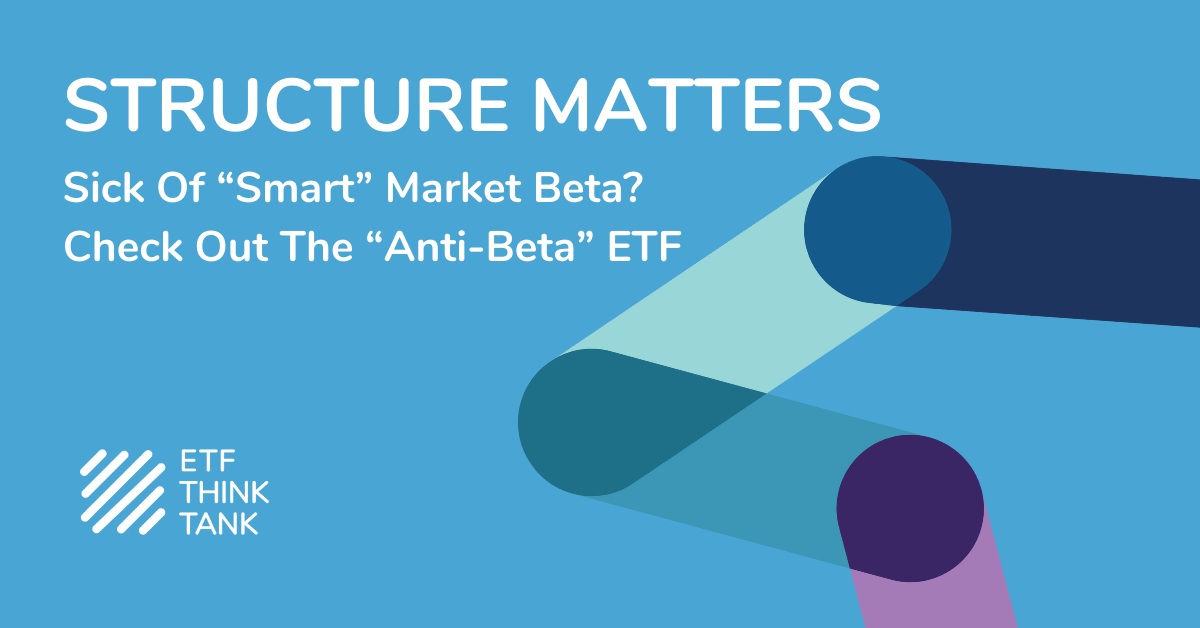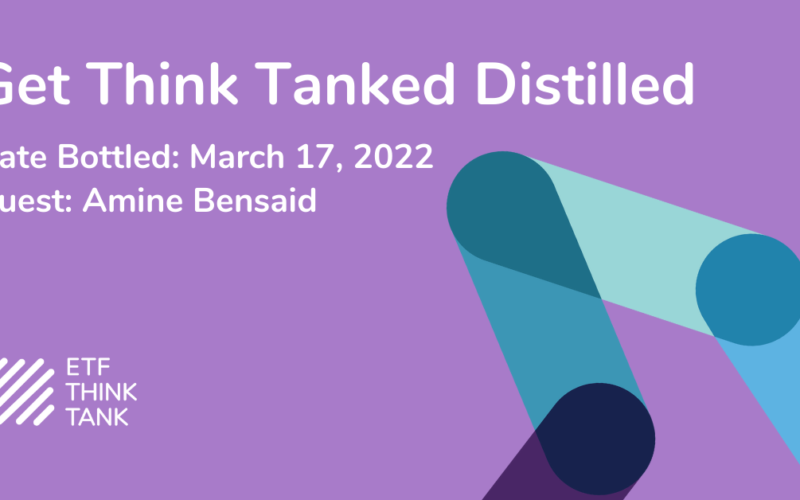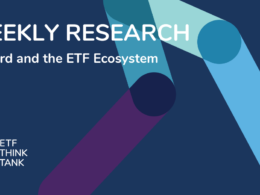
Structure Matters
Back in 2018, we wrote a piece for Street.com called “What ETF Growth Means for Retirement.” The piece highlighted how a 75/25 SPY/BTAL simple portfolio might outperform the traditional 60/40 portfolio. As the chart above illustrates, today’s conditions make it worth unpacking, though the piece itself may have been early in its vision. There is no question that current market conditions will differ from past conditions, and will remain different for the foreseeable future. This is a structural change in market conditions that almost all strategists agree on. Simply put, the free lunch is over, and the risks associated with war, inflation, Fed policy and different geopolitical agendas are here to stay. To this point, portfolio adjustments are necessary and as we have said in the past, alternative strategies that offer less correlation to traditional strategies should arguably play an increased role in investor portfolios. Of course, identifying which strategies are truly hedge fund-like, or even an appropriate fit as an alternative allocation, requires some real due diligence. Many hedge fund ETFs are complex, and some require a sophisticated understanding of convexity and volatility. Nevertheless, it is clear that the days for inflows in this area of the ETF market are upon us.
Expectations are that interest rates will increase 100 to 150 Bps over the next 12-18 months. Then, the question is whether we have have a recession, stagflation, or a beautifully soft, honeymoon-like landing. Anyone with a crystal ball knows forecasting these future conditions is impossible, so the question is whether or not adjustments should be made to a portfolio. The fact is that conditions over these past ten years have set a tone for investor expectations to remain optimistic and buy the dip while hoping for a rebound, but the fixed income math may not work so well when the rate of change is so dramatic. In a traditional 60/40 portfolio, statements may show a dramatic decline in fixed income if the duration of the portfolio that traditionally hedged the equity decline fails to deliver a smoothing-out experience for investors. No zig when the other zags!

We are focusing on the AGF Anti-Beta ETF (BTAL) and the Invesco S&P500 High Beta ETF (SPHB) versus its Russell 1000 Low Beta (USLB) to illustrate how Beta has performed in recent markets. These ETFs are not necessarily the same holdings as the BTAL packaged solutions that capture the spread between high/low, but they illustrate the point that the wide High Beta/Low Beta spread may be compressing these days. To further the point, we also add the TLT in this illustration in Chart #3.

We have tracked the performance spread since 2015 between High Beta and Low Beta and would only point out that, using the Invesco Method, this spread remains extraordinarily wide. There are nuances in regards to calculating and rebalancing BETA in a portfolio. For this reason, AGF chose to move to an active fund strategy in 2021 rather than its historic passive structure. This means that the new strategy will follow the past methodology, but also provides more flexibility to step in when things get out of whack. Ironically, as one of the early true “smart Beta” funds (9-13-11 inception), this change demonstrates the firm’s willingness to address issues, and highlights that sometimes human intervention is necessary.

As expected, High Beta moves outpace Low Beta moves. This is illustrated in extreme moves in the fourth quarter of 2018, and the move from the March 2020 bottom. Since the High Beta (Short)/Low Beta (Long) relationship in BTAL is structured with a balanced approach to holding 200 names long and 200 names short, there are times for investors to have a strategic position and times to be more tactical to preserve capital, aka playing defense. (See holdings)

The Hedge Fund and Alternative Category
According to ETF.com, there are 46 ETFs worth about $5.62 billion with Hedge Fund-like qualities. IndexIQ, of course, led the category with its early flagship launches of QAI and MNA. Of course, through due diligence calls in the ETF Think Tank, we work with advisors to understand how these types of solutions can be integrated into a portfolio. In the past, the push back has been in deciding where to pull money from: Equities or Fixed Income. Cash is also an asset class and given that inflation today nearing 8% is a guaranteed loss, this asset class is less compelling. Arguably, shooting for an opportunity to earn a positive low-correlated return has never been more compelling. What better way to do it than through an ETF that provides a structure that matters, AKA tax efficient, relatively low cost, transparent and liquid. Choose your own favorite attribute!
The catch all phrase “alternatives” includes multi-asset class, VIX, commodities and special situations, and therefore is tough to breakdown in terms of a consistent AUM KPI. According to Bloomberg, flows into commodities have accelerated, and now total $15,874 YTD as of March 14th. The 1-year flows for 143 ETFs were $15.5 billion and $60.6 Billion cumulatively for the past 3 years. Will flows in 2022 and 2023 lead to a tripling of this category in the ETF space? This is an area that aligns well with inflation and one which we have highlighted during many Twitter Spaces sessions, as well as the due diligence calls, we host. It is an overlooked category that some advisors are hesitant to allocate to, but which arguably has not been this fundamentally strong for decades. We would argue that while price momentum was already building, the Russian invasion of Ukraine will further exacerbate the shortage of grains. Ukraine makes up 15% of worldwide harvest, according to farmdocdaily.
Summary
A new environment for stocks and bonds will lead to investors approaching risk from a different perspective. No matter how an investor or financial advisor looks at current investment conditions, the bull market for equities and bonds have meaningful headwinds, more than what they were in past years. This does not mean that investment plans should be changed or that long term goals will not be achieved, so long as they were established with realistic objectives which include an inevitable recession and yes, even a bear market. Markets move in cycles, and while weak markets feel horrible, they reflect economic conditions and squeeze out unhealthy excesses and overly optimistic views. Regardless of your current positioning, we recommend searching for more diversification from the traditional portfolio structure.
Disclosure
All investments involve risk, including possible loss of principal.
This material is provided for informational purposes only and should not be considered an individualized recommendation or personalized investment advice. The investment strategies mentioned may not be suitable for everyone. Each investor needs to review an investment strategy for his or her own particular situation before making any investment decision.
All expressions of opinion are subject to change without notice in reaction to shifting market conditions. Data contained herein from third party providers is obtained from what are considered reliable sources. However, its accuracy, completeness or reliability cannot be guaranteed.
Examples provided are for illustrative purposes only and not intended to be reflective of results you can expect to achieve.
The value of investments and the income from them can go down as well as up and investors may not get back the amounts originally invested, and can be affected by changes in interest rates, in exchange rates, general market conditions, political, social and economic developments and other variable factors. Investment involves risks including but not limited to, possible delays in payments and loss of income or capital. Neither Toroso nor any of its affiliates guarantees any rate of return or the return of capital invested. This commentary material is available for informational purposes only and nothing herein constitutes an offer to sell or a solicitation of an offer to buy any security and nothing herein should be construed as such. All investment strategies and investments involve risk of loss, including the possible loss of all amounts invested, and nothing herein should be construed as a guarantee of any specific outcome or profit. While we have gathered the information presented herein from sources that we believe to be reliable, we cannot guarantee the accuracy or completeness of the information presented and the information presented should not be relied upon as such. Any opinions expressed herein are our opinions and are current only as of the date of distribution, and are subject to change without notice. We disclaim any obligation to provide revised opinions in the event of changed circumstances.
The information in this material is confidential and proprietary and may not be used other than by the intended user. Neither Toroso or its affiliates or any of their officers or employees of Toroso accepts any liability whatsoever for any loss arising from any use of this material or its contents. This material may not be reproduced, distributed or published without prior written permission from Toroso. Distribution of this material may be restricted in certain jurisdictions. Any persons coming into possession of this material should seek advice for details of and observe such restrictions (if any).












